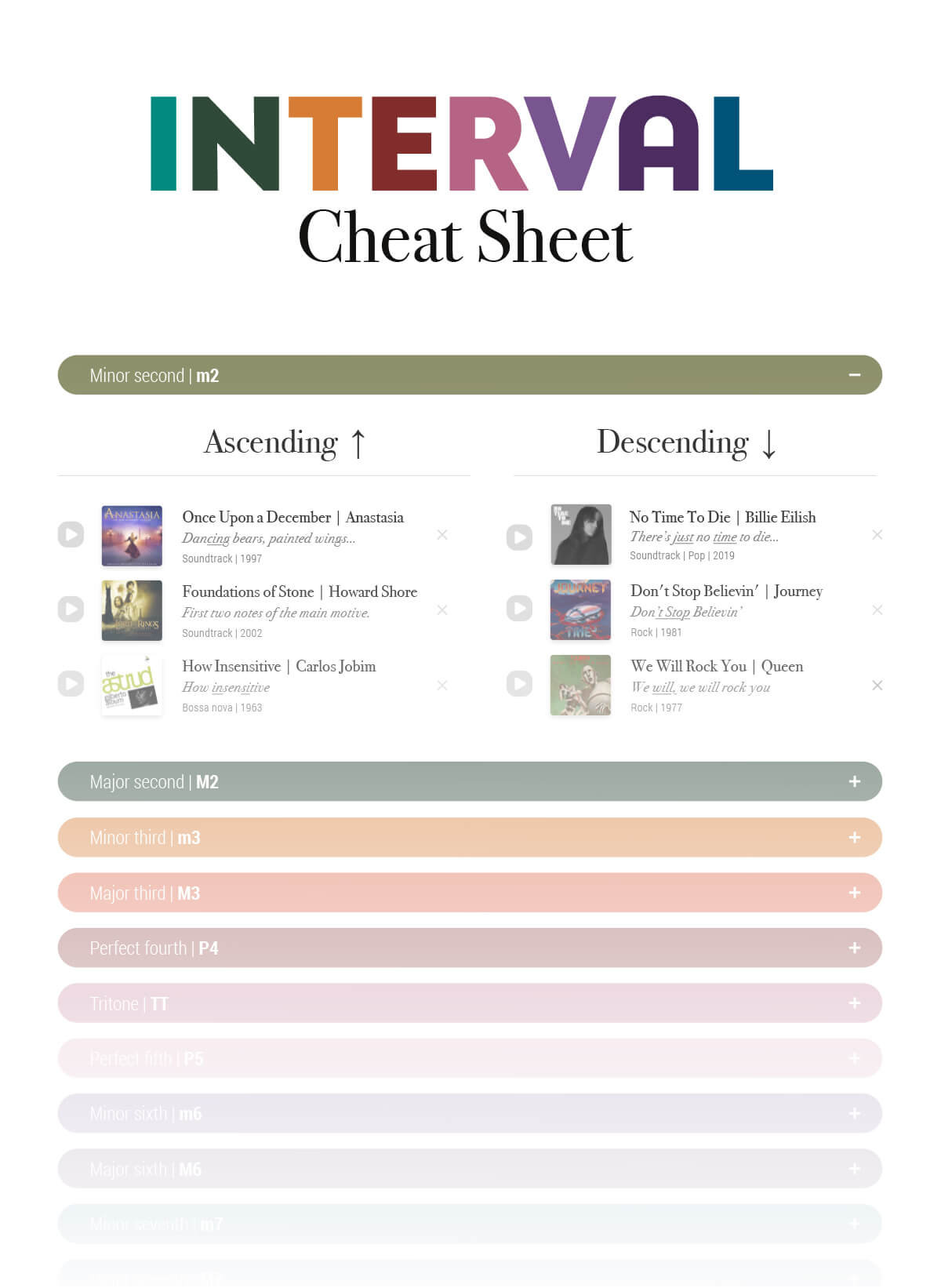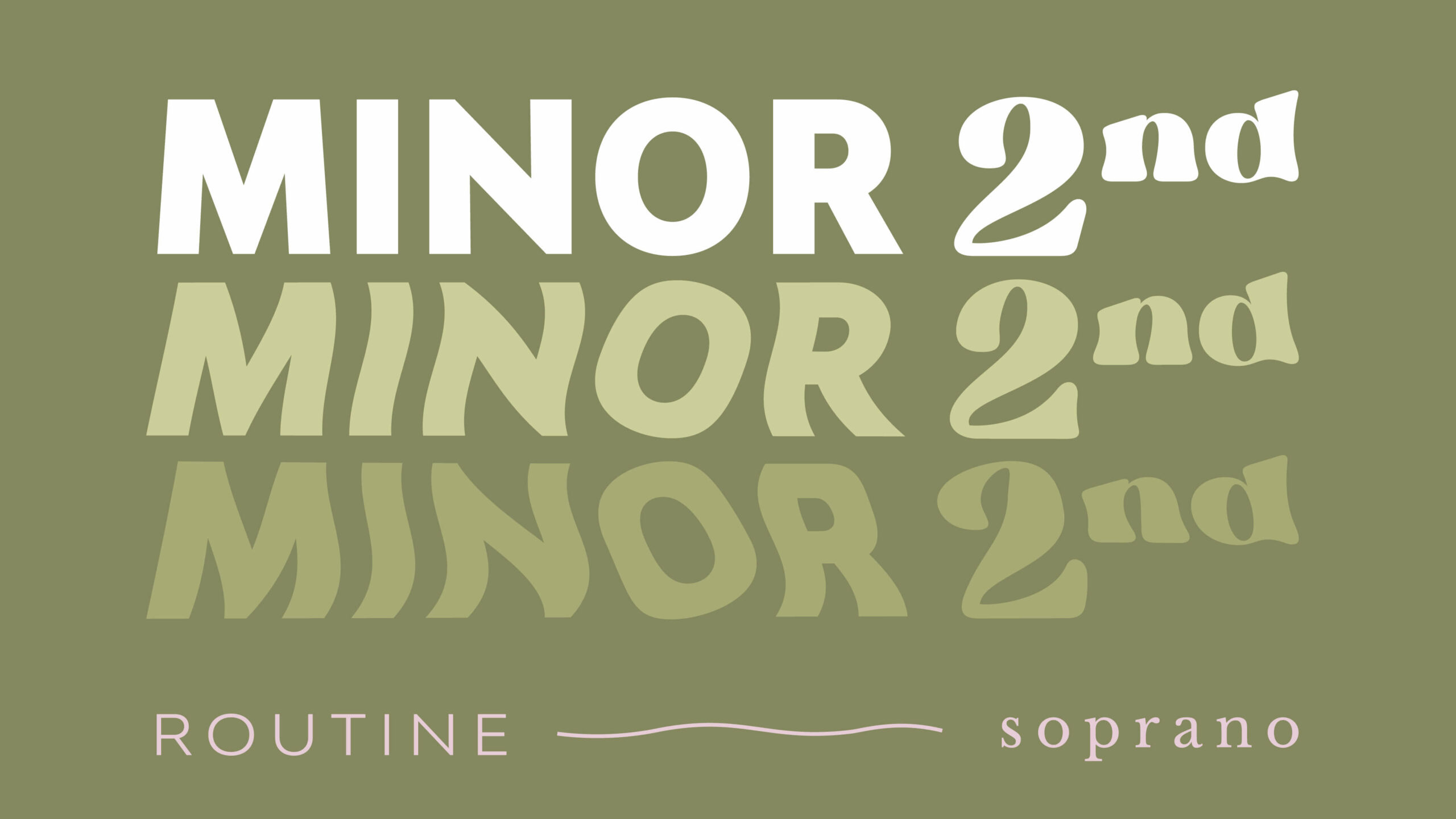Intervals
The foundation of melody and harmony!
As atoms are the building blocks of matter, intervals are the building blocks of melody and harmony.
Interval is the space between two notes.
An interval may be presented in different ways:
Melodic | Vertical Successively sounding tones such as two adjacent pitches in a melody.
Ascending
Descending
Harmonic | Horizontal | Linear Simultaneously sounding tones such as in a chord.
The number of an interval is the number of letter names or staff positions (lines and spaces) it encompasses, including the positions of both notes forming the interval.
E - G is a 3rd
C - G is a 5th
D - C is a 7th
F - F is an 8ve
Every interval except the number has its quality.
Perfect
They are considered as perfectly consonant.
Major & Minor
Except for perfect intervals all the rest of intervals occur in two sizes which differ by semitone.The larger ones are called major the smaller ones minor.
Augmented & Diminished
Augmented intervals are wider by one semitone than perfect or major intervals, while having the same interval number.
Diminished intervals are narrower by one semitone than perfect or minor intervals, while having the same interval number.
The only augmented and diminished intervals that appear in diatonic scales are:
Within a diatonic scale, unisons and octaves are always qualified as perfect, fourths as either perfect or augmented, fifths as perfect or diminished, and all the other intervals (seconds, thirds, sixths, sevenths) as major or minor.
Get familiar with all the intervals:
Click the interval to learn more about it.
Different Context
The context is very important! Neither the number, nor the quality of an interval can be determined by counting semitones alone. The number of staff positions must be taken into account as well.
All the examples below has the same number of semitones between the notes but they’re notated differently and because of that they’re named differently:
It doesn’t apply when you recognise intervals without any context, without given key!
Inversion
A simple interval (an interval smaller or equal to an octave) may be inverted by raising the lower pitch an octave or lowering the upper pitch an octave.
1. The interval number and the number of its inversion always add up to nine.
2. The inversion of a major interval is a minor interval, and vice versa.
3. The inversion of a perfect interval is also perfect.
4. The inversion of an augmented interval is a diminished interval, and vice versa.
5. The inversion of a doubly augmented interval is a doubly diminished interval, and vice versa. 6. There are no rules without exceptions! The inversion of a tritone will always result in another tritone,
although the specific pitch names may differ due to enharmonic spellings (augmented fourth or diminished fifth).
Compound Intervals
In general, a compound interval may be defined by a sequence or “stack” of two or more simple intervals of any kind. A major 10th, also called compound major 3rd, spans one octave plus one major 3rd.
Any compound interval can be always decomposed into one or more octaves plus one simple interval. The quality of compound interval is determined by the quality of simple interval on which it is based.
Create your own Interval Cheat Sheet
To effectively recognize intervals, it’s best to associate them with reference songs you know well. Our website offers a wide selection of songs that serve as great examples of characteristic melodies for every single interval, both ascending and descending.
Unlock a world of musical knowledge with a free account. Create your personal Interval Cheat Sheet and get access to all the song titles that contain the intervals you want to master. Sign up now and take your music skills to the next level.


Hi! I’m Justine Sounds, a singer, songwriter, and the proud founder of Open Minded Singing. If you enjoyed reading this article, I would greatly appreciate it if you could share it with your friends. Feel free to reach out to me if you have any questions or inquiries. Also, don’t forget to follow @openmindedsinging on social media for more exciting updates and content.
Thank you for your support!
Join us and transition from theory to practice!
The importance of routines and regular practice cannot be overstated, but it’s often challenging to know what exercises to do, especially without access to a piano. That’s where Open Minded Singing comes in!
With just your phone, tablet, or computer, along with a pair of headphones, you can unlock a world of singing workouts designed for every occasion. No more guesswork or frustration — simply log in, choose a workout, hit the play button, and sing.

For a limited time, our monthly subscription is available at the exclusive early price. As an early subscriber, you’ll not only gain access to a collection of workouts that grows every moth, but you’ll also receive personalised support from Justine Sounds herself. Imagine having a professional singer guiding you every step of the way!

